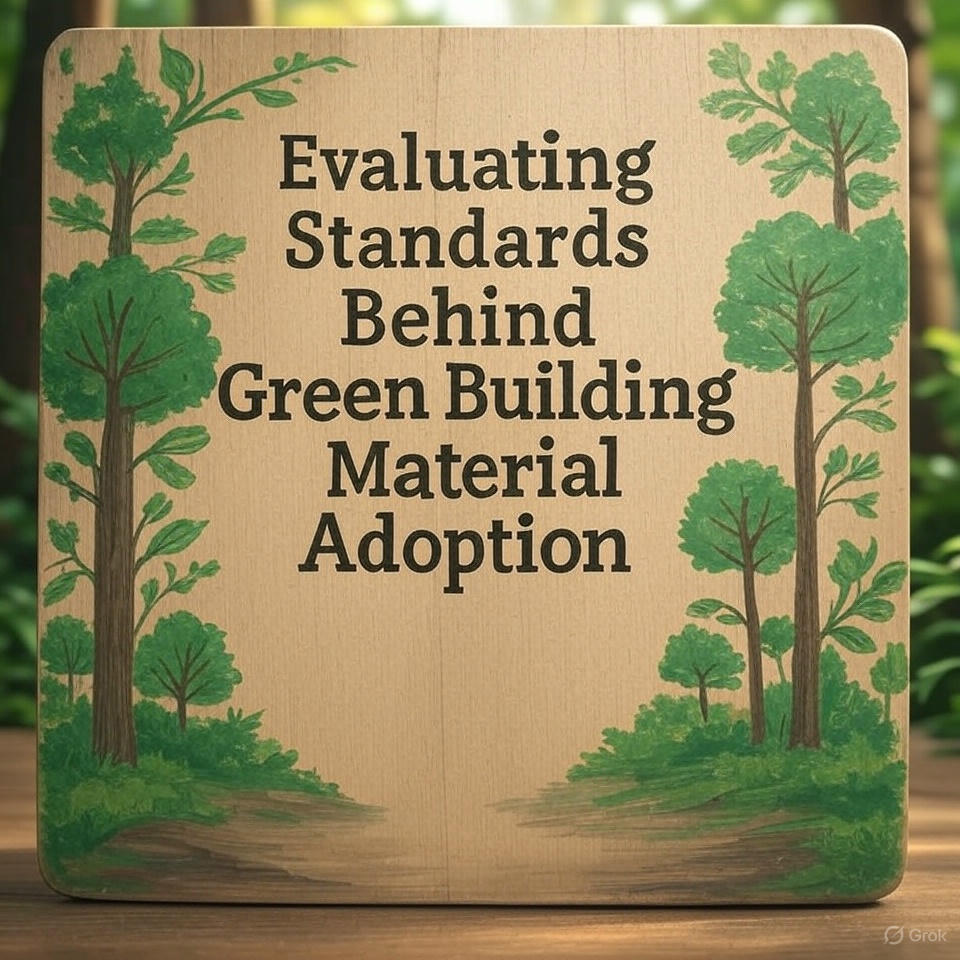The push toward sustainability in real estate has brought green building materials to the forefront of development strategies. As jurisdictions mandate stricter environmental standards and developers seek to improve long-term asset value, the demand for eco-friendly materials has accelerated. However, adoption is not purely driven by innovation or goodwill; it is heavily influenced by regulatory frameworks, certification systems, and cost-benefit analysis. Evaluating the standards guiding this adoption is essential for understanding how green materials are reshaping construction norms, investment expectations, and market dynamics.
Regulatory Frameworks and Certification Schemes
Governments at all levels have implemented energy efficiency codes and environmental mandates that dictate the use of low-emission, recyclable, and sustainably sourced materials. Building codes like the International Green Construction Code (IgCC) and programs such as LEED (Leadership in Energy and Environmental Design) have established benchmarks for compliance.
If you are considering diversifying into environmentally forward developments, you should check private equity investments disadvantages to understand how longer holding periods, illiquidity, and limited investor control may impact your entry into sustainable real estate markets.
These frameworks go beyond voluntary adoption; in many regions, compliance is mandatory for new residential and commercial developments. Developers who aim for higher certification levels may gain benefits such as tax credits, accelerated permitting, and increased tenant appeal, but they must also manage higher upfront costs and regulatory scrutiny. In Canada and the U.S., emerging regional standards now push builders toward net-zero-ready benchmarks that require a complete overhaul of traditional construction inputs.
Certifications like Passive House and WELL Building Standard also layer additional performance requirements that go beyond energy efficiency. These include indoor air quality, lighting, acoustic comfort, and occupant wellness—each requiring specific material types to comply. Meeting these higher standards can add complexity to procurement and extend project timelines, especially in areas where approved product availability is limited.
Financial Trade-Offs and Investor Implications
Adopting green building materials often means balancing higher initial capital outlays against potential long-term savings and market positioning. Materials such as recycled steel, cross-laminated timber, and low-VOC finishes command premium pricing but contribute to energy efficiency, healthier indoor air quality, and increased durability.
Investors must weigh these benefits against potential drawbacks, particularly in private equity structures where returns are tied to long-term appreciation and operating cost efficiencies. These models may lack liquidity and transparency, making it difficult to exit or reallocate capital if performance expectations shift due to regulatory delays or cost overruns.
Additionally, green materials may not deliver equal ROI across all asset classes or markets. For instance, suburban mid-rise developments may not command rental premiums high enough to justify material costs, whereas urban Class A projects can absorb these inputs due to stronger tenant demand. Understanding the economics of sustainability in each submarket is crucial for making informed investment decisions.
Market Demand and Developer Adaptation
The adoption of green building materials is also shaped by consumer and tenant expectations. In urban markets, renters and buyers increasingly value sustainable construction as part of lifestyle alignment and cost savings. Developers are responding by embedding environmental features into the earliest design stages, ensuring compliance with energy standards and marketing green credentials to end-users.
However, meeting these expectations can raise project risk. Green construction often involves working with newer technologies, less-tested materials, and limited supplier pools. Project timelines may extend due to inspection protocols, supply chain constraints, or contractor unfamiliarity with sustainable products. The cost and availability of skilled labor trained in sustainable building techniques can further complicate budgeting and scheduling.
In response, some developers are integrating in-house sustainability consultants or partnering with third-party certifiers early in the planning process. This proactive approach helps mitigate mid-project design changes and ensures alignment between material selection, performance goals, and compliance mandates. Transparency in sourcing and clearly documented environmental product declarations (EPDs) are becoming essential components of green development documentation.
Accountability, Compliance, and Long-Term Impact
Monitoring and verifying the use of certified green materials involves detailed documentation and third-party audits. Regulatory bodies require submission of environmental assessments, materials sourcing records, and ongoing performance metrics. Non-compliance can lead to penalties, loss of incentives, or reputational damage that affects project viability.
Despite the complexities, long-term adoption of green building materials is seen as inevitable. Regulatory pressures, climate mandates, and investor preferences are coalescing to form a construction landscape that increasingly favors sustainable choices. For real estate professionals, aligning with these shifts means navigating both opportunity and operational challenge.
Global financial institutions are also beginning to assess ESG compliance as part of underwriting criteria for development loans. This makes alignment with green building standards not only a compliance matter, but a financing prerequisite. Projects that fail to meet sustainability benchmarks may face higher capital costs or limited access to funding.
Final Thoughts
Green building material standards are redefining real estate development across regulatory, financial, and investment dimensions. While they offer a path to long-term performance and compliance with future-focused mandates, they also introduce complexity and risk—especially within private equity models. Understanding these dynamics is essential for strategic positioning in a sustainability-driven market.






